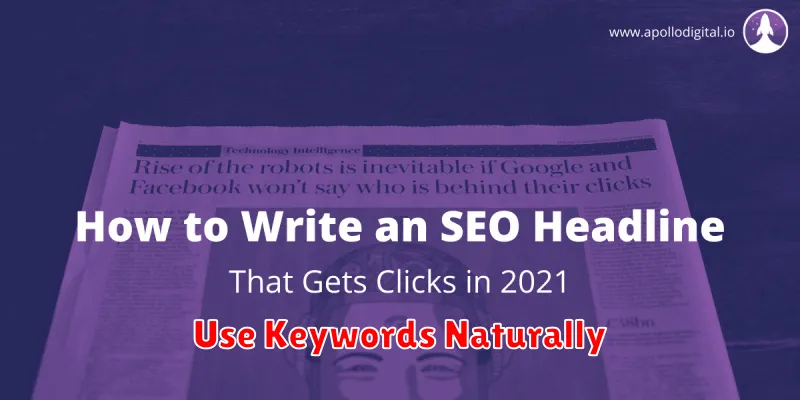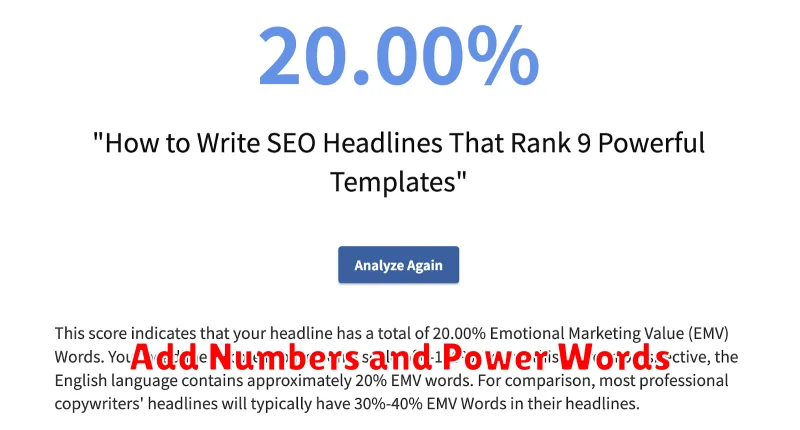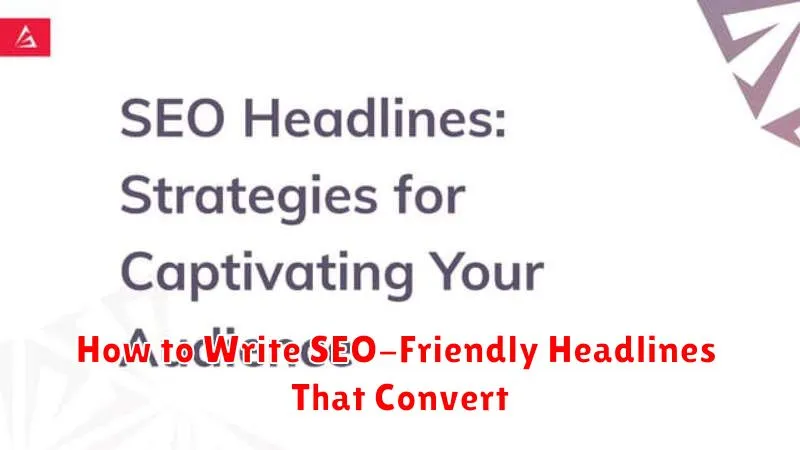In today’s digital landscape, crafting SEO-friendly headlines is paramount to driving traffic and boosting conversions. A compelling and optimized headline not only grabs the reader’s attention but also signals relevance to search engines, ultimately determining whether your content gets discovered by your target audience. This guide delves into the art of writing headlines that convert, providing you with actionable strategies to improve your SEO performance and maximize your content’s reach.
Learning how to write SEO-friendly headlines is more than just inserting keywords; it’s about understanding user intent and crafting a compelling promise that entices clicks. This article will equip you with practical techniques for creating headlines that convert by balancing SEO best practices with engaging language that resonates with your readers. Discover the key elements of effective headlines, including keyword placement, length optimization, and emotional triggers that boost click-through rates, ultimately leading to increased conversions.
Why Headlines Are Critical
Headlines are the first, and often only, impression you make on a potential reader. They are the gateway to your content, acting as a virtual gatekeeper. A compelling headline can entice readers to click through and engage with your content, while a weak or uninteresting one can result in lost opportunities, regardless of how valuable the content itself may be.
Effective headlines serve several crucial purposes. They quickly communicate the topic and value proposition of your content, helping readers decide if it’s relevant to their interests. A well-crafted headline grabs attention in a crowded digital landscape, standing out amidst the constant barrage of information. They also play a significant role in search engine optimization (SEO), influencing how search engines understand and rank your content.
Ultimately, the effectiveness of your headline directly impacts your conversion rates. Whether your goal is to generate leads, drive sales, or simply increase readership, a strong headline is essential for achieving those objectives.
Use Keywords Naturally

While it’s important to include relevant keywords in your headlines, avoid keyword stuffing. Keyword stuffing is the practice of overusing keywords in an attempt to manipulate search engine rankings. This practice can actually harm your SEO efforts and make your headlines sound unnatural and unappealing to readers.
Focus on creating headlines that are clear, concise, and compelling while naturally incorporating your target keywords. Think about how your target audience would search for information related to your content. What words or phrases would they use? Use these keywords in a way that flows smoothly within the headline and makes sense to the reader.
For example, if you’re writing an article about the best dog toys for large breeds, a naturally keyword-rich headline might be “Top-Rated Dog Toys for Large Breeds: Durable and Engaging Options.” This headline includes relevant keywords like “dog toys,” “large breeds,” “durable,” and “engaging” without sounding forced or unnatural.
Add Numbers and Power Words

Using numbers in your headlines provides concreteness and can make a promise more tangible. For example, “5 Ways to Improve Your Writing” is more compelling than “Ways to Improve Your Writing.” Numbers offer a clear expectation of what the reader will receive.
Power words evoke emotion and curiosity, enticing readers to click. These words create a sense of urgency, exclusivity, or benefit. Examples of power words include: “secret,” “ultimate,” “essential,” “proven,” “effective,” and “guaranteed.”
Consider combining numbers and power words for maximum impact. A headline like “7 Secret Tips to Boost Your Website Traffic” uses both techniques to draw readers in.
Keep It Short and Compelling
Search engines typically truncate titles that are too long, impacting how they appear in search results. Brevity is key. Aim for a headline that is around 60 characters to ensure the entire title is displayed. This also helps with readability and keeps the user’s attention focused.
While keeping it concise, your headline also needs to be compelling. It should pique the reader’s interest and entice them to click. Use strong verbs and highlight the key benefit or takeaway the reader will gain by clicking through to your content. Ask yourself: “If I saw this headline in a search result, would *I* click it?”
Think of your headline as a mini-advertisement for your content. It’s the first, and often only, impression you have to make on a potential reader. Make it count.
A/B Test Multiple Variants
A/B testing isn’t limited to just two headline options. Testing multiple variants simultaneously can expedite the process of finding the highest-performing headline. This approach allows you to compare several different angles, phrasing, and keyword combinations at once.
Tools and Platforms provide streamlined A/B testing capabilities for headlines. Many content management systems (CMS) and social media platforms offer built-in A/B testing features. Dedicated A/B testing software offers more advanced options and analytics.
Analyzing the Results of a multi-variant test involves comparing key metrics like click-through rates (CTR), conversion rates, and bounce rates for each headline. Identify the statistically significant winner and implement it.
Avoid Clickbait and Overpromising
While the goal is to attract clicks, avoid misleading tactics. Clickbait headlines often overpromise or create a sense of urgency that doesn’t reflect the content. This erodes trust and increases bounce rates.
Focus on accuracy. Accurately reflect the content within the headline. Don’t exaggerate or imply something that isn’t delivered.
Manage expectations. A good headline sets clear expectations for the reader. If your content delivers on the headline’s promise, readers are more likely to engage and share.
Think long-term. Building a reputation for reliable, informative content is more valuable than short-term gains from misleading headlines.
Match Headline with Content
A compelling headline grabs attention, but it’s meaningless if the content doesn’t deliver on the headline’s promise. Accuracy and relevance are key. Misleading headlines, even if they attract clicks, ultimately damage your credibility and SEO.
Think of your headline as a contract with the reader. It sets an expectation. The content that follows must fulfill that expectation. If your headline promises a solution to a problem, the article should provide that solution clearly and concisely.
Example: A headline like “5 Easy Steps to Baking the Perfect Cake” should be followed by content that outlines five, and only five, simple steps to baking a cake. Deviation from this will lead to reader frustration.

